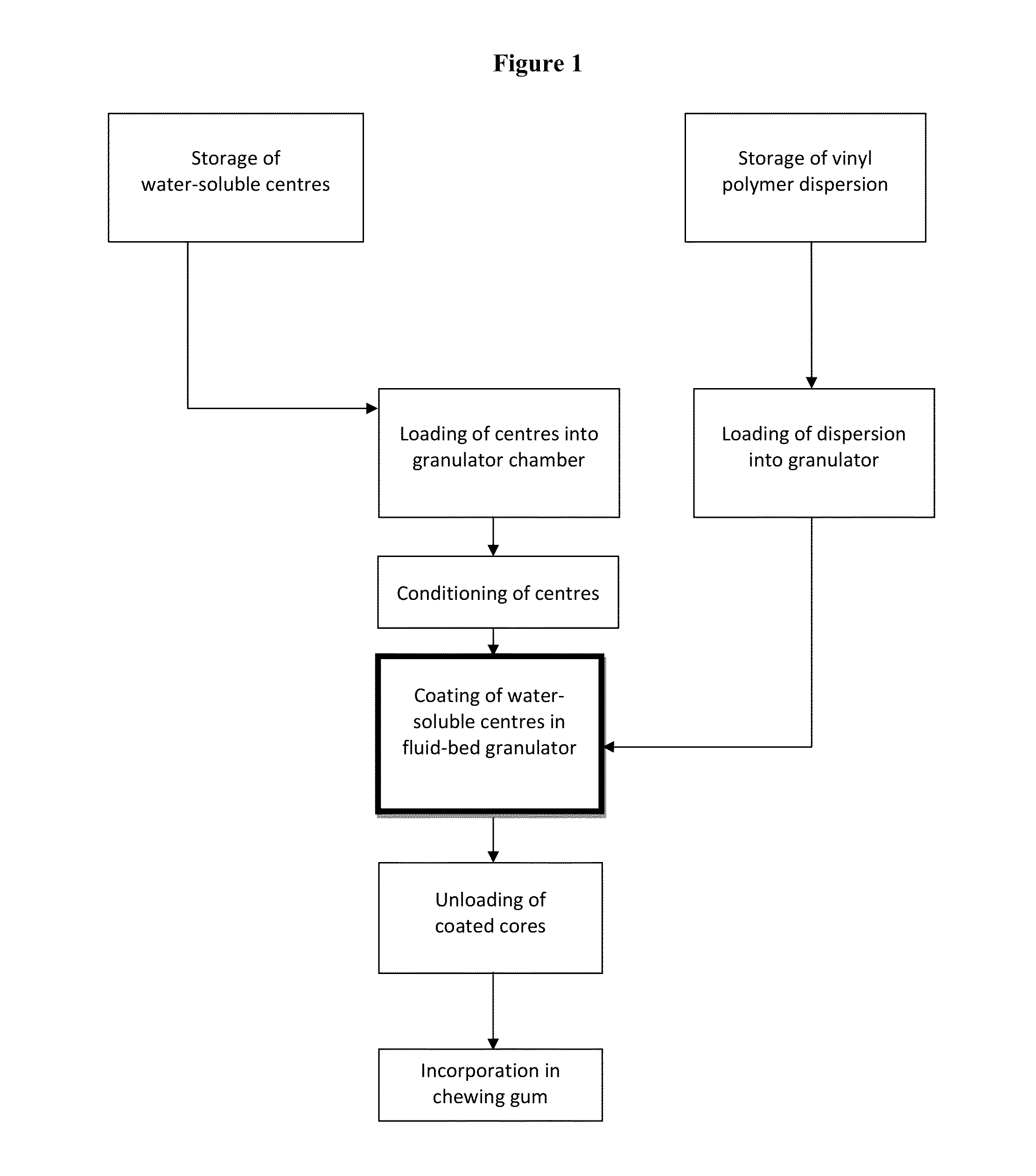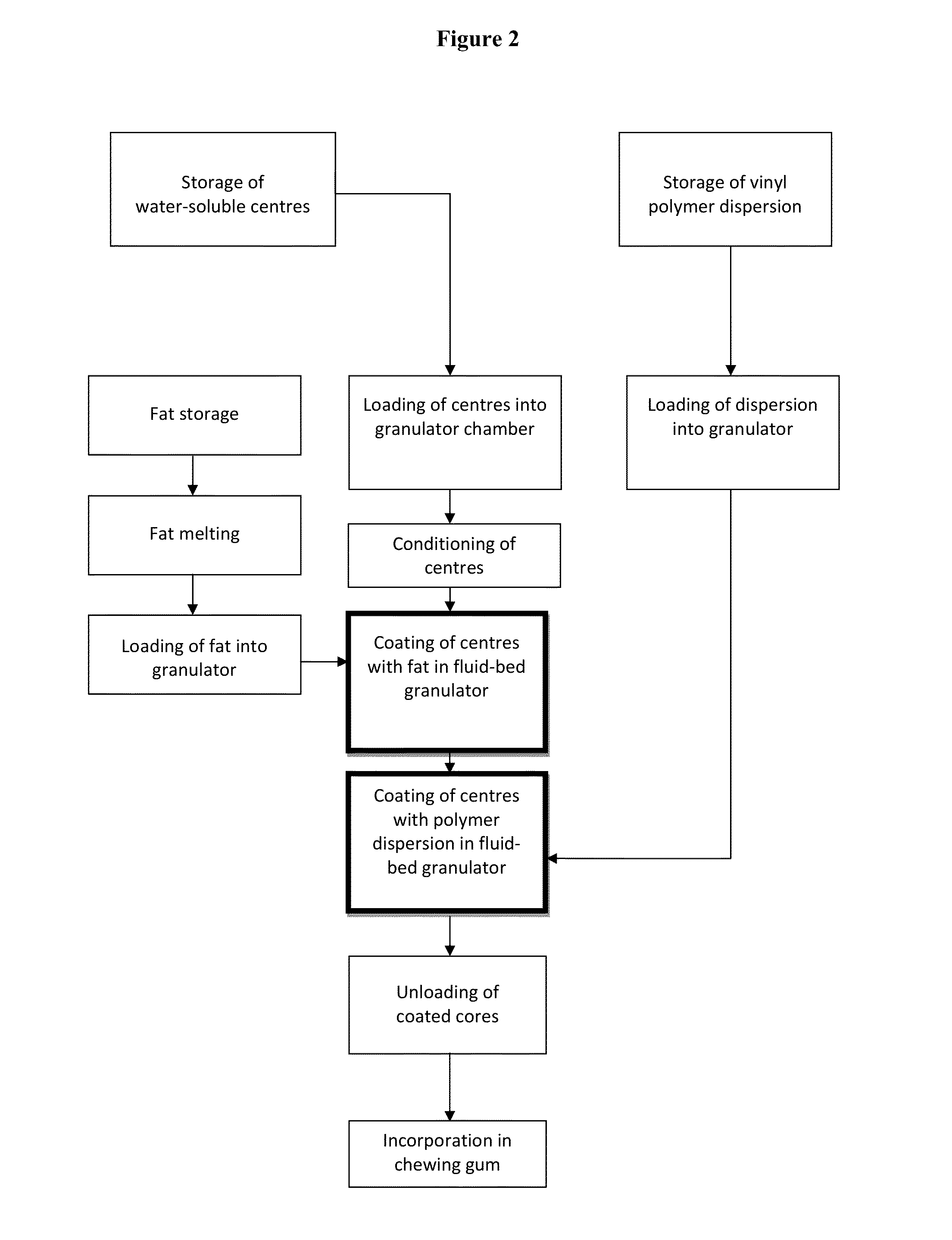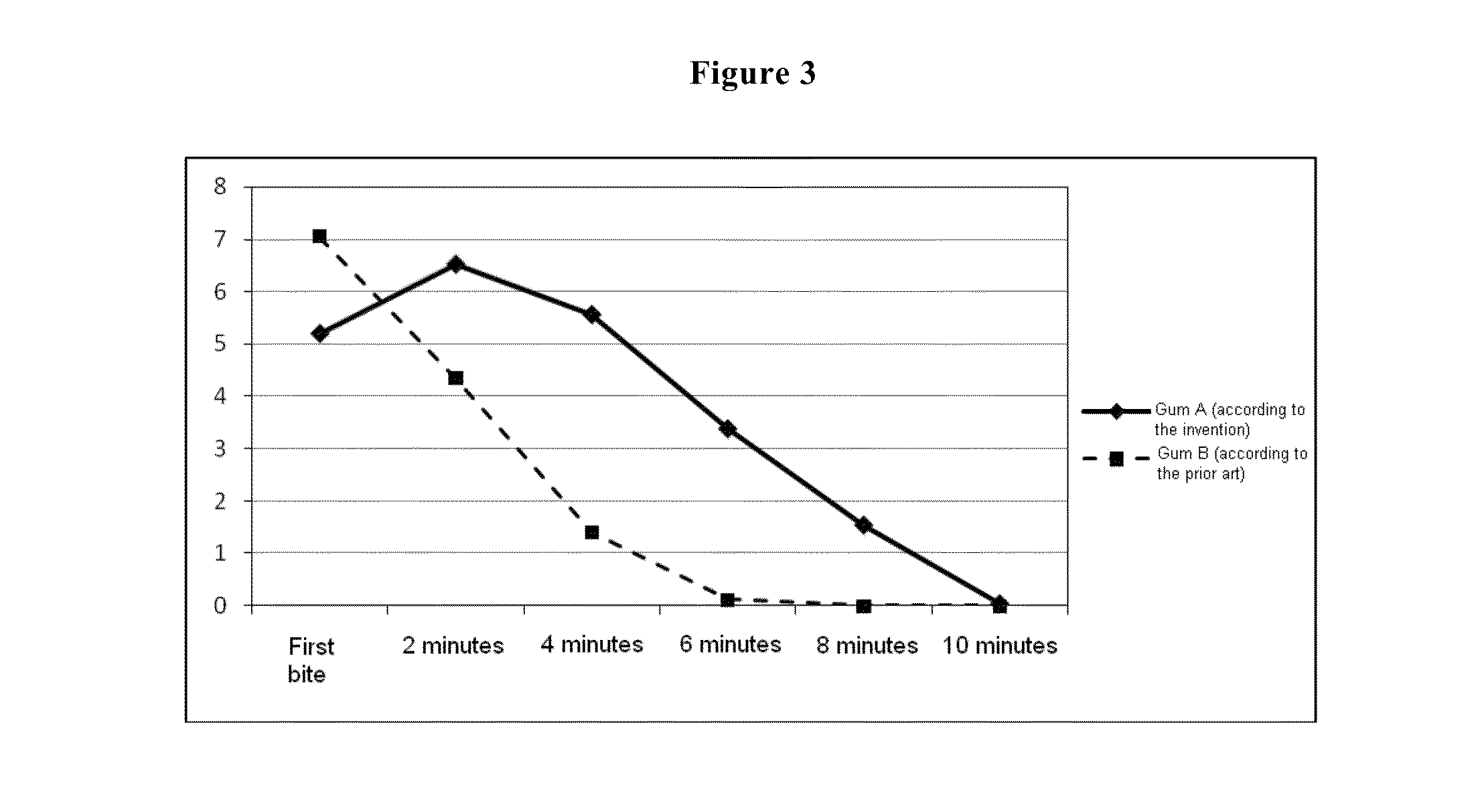Slow-release dietary formulations
a technology of dietary formulations and slow release, which is applied in the field of slow release dietary formulations, can solve the problems of excessively low sensory perception, slowing down the process, and affecting the palatability of the edible composition or the functionality of the active ingredien
- Summary
- Abstract
- Description
- Claims
- Application Information
AI Technical Summary
Benefits of technology
Problems solved by technology
Method used
Image
Examples
example 1
Invention
[0145]This example describes how to obtain a dietary formulation for the slow release of citric acid.
[0146]Anhydrous citric acid in granules (1215 g) with 90% by weight of particles between 250 and 1000μ is placed in a fluid-bed granulator.
[0147]Hydrogenated vegetable fat is placed in a tank heated to 70° C. and dissolved.
[0148]The citric acid is coated in the granulator until 100 g of fat has been used. Particles of fat-coated acid with the following composition are obtained
g of dry% of dryIngredientmattermatterAnhydrous citric acid1215.092.4Hydrogenated vegetable fat100.07.6Total1315.0100
[0149]The particles are unloaded and, after cleaning of the system, reloaded into the same granulator.
[0150]A mixture at room temperature is prepared separately in the proportions described in the table below.
Ingredientg%Dispersion of polyvinyl acetate / polyvinyl1500.059.5alcohol in waterAddition of water1000.039.7Propylene glycol20.00.8Total2520.0100
[0151]The mixture is sprayed in the flu...
example 2
Invention
[0152]This example describes how to obtain a dietary formulation for the slow release of a mint flavour.
[0153]A flavour in granular form (g), carried by modified starch and maltodextrin, with 90% by weight of particles between 400 and 1300μ, is placed in a fluid-bed granulator.
[0154]A mixture at room temperature is prepared separately in the proportions described in the table below.
Ingredientkg%Dispersion of polyvinyl acetate-laurate copolymer / 12070.4hydroxypropyl cellulose in waterAddition of water50.029.4Triacetin0.20.2Total170.2100
[0155]The mixture is sprayed in the fluid-bed granulator onto the fluidized mass of flavour, at suitable temperatures and speed, until 83 kg has been used. The slow-release dietary formulation obtained, wherein the active ingredient is mint flavour, has the composition shown in the table below
Ingredientkg%Mint flavour on carrier100.0084.3Polyvinyl acetate-laurate copolymer / 17.514.8hydroxypropyl celluloseTriacetin0.100.1Residual water10.8Total...
example 3
Comparison
[0156]A method of obtaining an encapsulated acid according to EP0229000 (melt-blend method) is reproduced
Ingredientg%Anhydrous citric acid in 6025powder formPolyvinyl acetate12050Glycerol monostearate6025Total240100
[0157]The polyvinyl acetate is heated and mixed at over 80° C. with glycerol monostearate, until a homogenous, plastic molten mass (melt-blend) has been obtained. The mass is removed from the heat source and powdered citric acid is added slowly. The mass is cooled until it solidifies, and then ground in a cryogenic grinder until a powder with a particle size below 600μ has been obtained.
PUM
 Login to View More
Login to View More Abstract
Description
Claims
Application Information
 Login to View More
Login to View More - R&D
- Intellectual Property
- Life Sciences
- Materials
- Tech Scout
- Unparalleled Data Quality
- Higher Quality Content
- 60% Fewer Hallucinations
Browse by: Latest US Patents, China's latest patents, Technical Efficacy Thesaurus, Application Domain, Technology Topic, Popular Technical Reports.
© 2025 PatSnap. All rights reserved.Legal|Privacy policy|Modern Slavery Act Transparency Statement|Sitemap|About US| Contact US: help@patsnap.com



